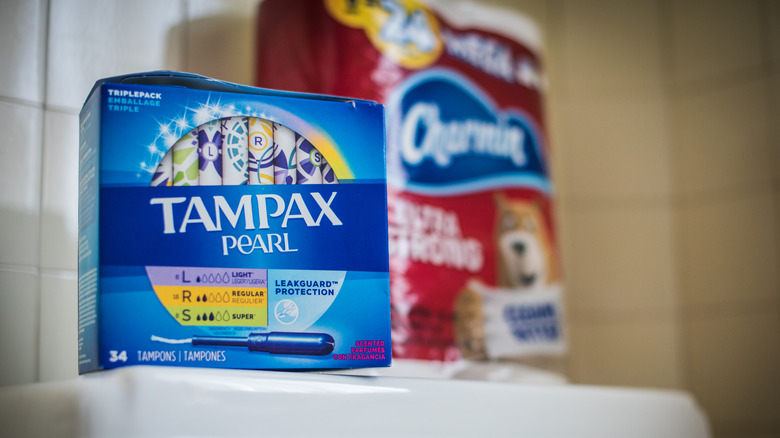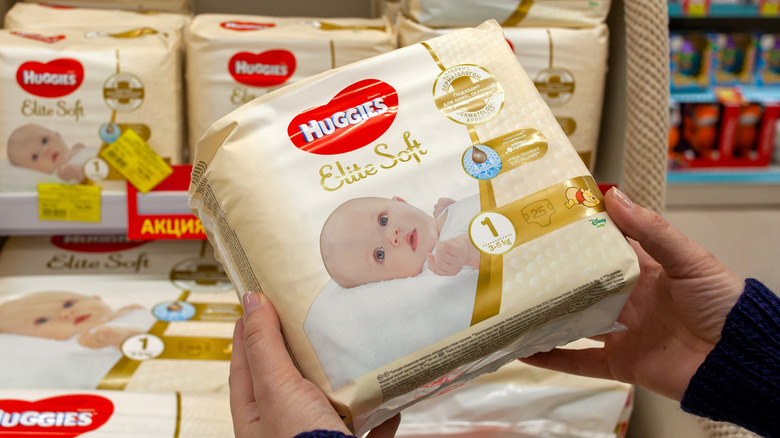The Real Reason These Household Products Will Cost You More This Fall
If you think the cost of diapers and personal hygiene products aren't easy on the wallet now, we've got some bad news for you. P&G, the manufacturer behind baby and adult diapers like Pampers, Luvs, and Always Discreet, as well as feminine hygiene products Always and Tampax, says it will be raising the prices of its products in the fall by what it called "mid-to-high single digit" percentages, with the price hikes taking effect in mid-September (via CNN Business).
The price increases aren't being imposed on a whim. Manufacturers like P&G are facing rising costs for everything from raw materials like wood resin and paper pulp, to transport costs, so much so that the company's operating chief, Jon Moeller, told The Wall Street Journal, "This is one of the bigger increases in commodity costs that we've seen over the period of time that I've been involved with this, which is a fairly long period of time."
Rival Kimberly-Clark has already announced a similar price hike
P&G isn't the first to announce future higher prices involving their paper products. One of their biggest competitors, Kimberly-Clark, already said last month that price hikes are in the cards for Huggies diapers as well as Scott-branded toilet tissue products (via The Wall Street Journal). Kimberly-Clark says the last time the consumer goods sector saw price hikes like these was in 2018, when the skyrocketing cost of pulp also triggered a corresponding increase in the price of paper-based hygiene products.
The need for price hikes is not a surprise decision for companies like Kimberly-Clark either, who foresaw the rising costs as early as January of this year. "The pricing plans we outlined in January were based on the commodity inflation outlook we provided at that time, so it's fair to say that we wouldn't be announcing these price increases if the commodity environment hadn't worsened," one company rep said.
CNN Business says that the price increases we're seeing today are the result of problems arising from the global supply chain, where shipping disruptions by air and sea triggered by the COVID-19 lockdowns drove up costs. Shipping containers are in the wrong ports and there are labor shortages caused by the pandemic at docks, which means companies are having to build in the cost of all this into their business plans. Inevitably, these costs would have been passed down to consumers, and it appears that time has come.

